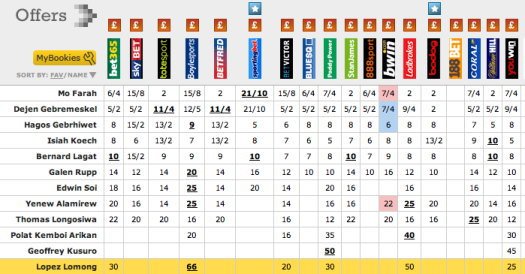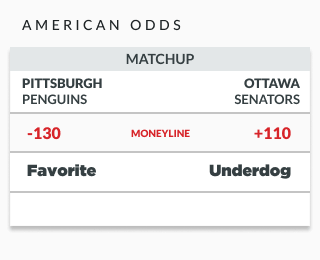Explaining Betting Odds
Betting guides meaning of odds. Horse Racing Odds Explained What Do Horse Racing Odds Mean? If you see a horse listed at 7-2 odds for the first time, or a mutuel payoff amount of $5.00, you may not quite understand what that means if you want to place a bet. Betting Odds Explained Odds are calculated according to the probability that something specific may or may not happen. In other words, let’s say the likelihood that Manchester United will win over Liverpool, or how likely that match will end in a certain amount of goals.
In the world of sports betting the first thing you will need to learn is to read and understand the odds. There are three traditional ways that online sports betting sites display odds. They include American, Decimal, and Fractional.
Regardless of how the odds are displayed, they’ll always mean the same thing. Watching the UFC, the odds format they talk is American Odds or Vegas Odds. Essentially what they are is the percentage of one outcome against another.

You can use our UFC Odds Calculator to work out percentages yourself.

We have a live odds tool on our site that you’ll notice on lots of our pages. We post live odds in American and Decimal format, but we don’t list live odds in the Fractional format.
The reason we don’t list live odds using Fractions on our site is that we don’t want to confuse bettors. Fraction odds are becoming more extinct every year, and many online sportsbooks have stopped posting odds using fractional odds entirely.
The betting odds are one of the most important factors in deciding on whether to bet on a game or not. If you study a UFC fight and determine that Jon Jones has a 60% chance of beating Mauricio Rua, then you’re going to need to find out if the odds are better than that.
Using our 60% example, we need to check to see if the odds are going to allow us to be profitable if Jones does win 60% of the time in this fight. You can use our betting calculator to check what the odds mean in percentage terms.
To break even betting on an outcome that is predicted to hit at a 60% rate you need to be getting odds of -150. If you’re getting better odds, i.e., -150 to a positive number (+100), then it’s a +EV bet to make, and you should place the bet.
We’re going to explain how to read the three different types of betting odds below, so make sure you check out both the American and Decimal formats if you don’t know how to read them yet.
American Betting Odds Explained
- Jon Jones -205 vs. Mauricio Rua +165
American odds are shown using whole numbers above 100, and they can have a positive or negative value. When the odds have a negative value, the odds will be presented with a (-) in front of the number whereas when the odds have a positive value they will have a (+) sign in front of the odds.
To understand how much you can make you need to remember one rule. When the odds are positive (+), the number reflects how much you’ll make on a $100 wager whereas if the odds are negative (-), the number reflects how much you need to bet to win $100 profit.
Explain Betting Odds Football
If you bet on Jones at -205 you need to risk $205 to win $100 profit and if you bet on Rua to win you’d win $165 profit for every $100 you bet.
The fighter with the negative value is ‘usually’ considered the favorite, and if both fighters have a negative value, then the fighter with the higher number is the favorite.
E.g:
- Fighter A: -105
- Fighter B: -109
Fighter B is considered the favorite in this matchup.
It’s rare for two fighters in MMA to both have negative value odds, but it does happen when two extremely evenly matched fighters fight against each other.
Decimal Betting Odds Explained
:max_bytes(150000):strip_icc()/dotdash_Final_The_Math_Behind_Betting_Odds_and_Gambling_Nov_2020-01-735accb453c8424b9e063c2c14e4edf4.jpg)
- Jon Jones 1.49 vs. Mauricio Rua 2.65
Decimal odds are used in most countries outside of North America, so we include decimal odds on our site for punters. Decimal odds are also known as European odds.
To understand decimal odds you always need to remember that your stake and profit are included in the odds. For instance, Jon Jones is favored to win the fight at 1.49 odds. If you bet $100 on Jones at 1.49, you’d win $149 back, which includes your stake and profits.
You’d win your $100 back plus make $49 profit.
If you bet on the underdog Rua in the fight for $100 at odds of 2.65 you’d win back $265, which includes your $100 stake plus $165 in profit.
Explain Betting Odds Horse Racing
To find out how much you can win using decimal odds you multiply the odds by how much you want to bet.
Fractional Betting Odds Explained
- Jon Jones 49/100 vs. Mauricio Rua 33/20
We want to say that we believe fractional odds are going to become less used, and therefore we don’t recommend using them unless you’re betting on horses.
If you’re betting on MMA, you should use Decimal odds, as every bookie offers Decimal odds and they’re easy to use when trying to figure out your profit.
If you need to be able to read fraction odds, they’re simple. The 1st number in the fraction is how much you’re paid out based on the 2nd number, which is how much you need to stake.
For instance, if you bet on Jones at 49/100 odds you need to calculate 49/100 x “Wager Amount” to come up with how much you’ll make. If you bet $100 (49/100 x $100 = $49) you’d make $49 plus receive your $100 stake back.
Odds change for a couple of reasons, but, once again you need to understand how sportsbooks make money. Essentially a sportsbook looks to have an equal amount of risk bet on all outcomes of the wager. That is the ideal result for them. To ensure this, they adjust the odds to make a bet more attractive to the side with fewer bets.
Let’s take our example of coin flipping again, to keep things simple. Let’s also assume we have 5 bettors all looking to bet $100.
| Heads Odds | Tails Odds | Heads Wins | Tails Wins |
|---|---|---|---|
| Bet 1 | -110 | -$91.92 | $100.00 |
If we look at “Bet 1” (below), the first bettor risks $100 on Heads for a chance to win $91.92. From the sportsbook’s point of view they are at risk of losing $91.92 on a Heads win, or retaining $100 on a tails win. Not ideal for a sportsbook since they look expect to make money on every event.
| Heads Odds | Tails Odds | Heads Wins | Tails Wins |
|---|---|---|---|
| Bet 1 | -110 | -$91.92 | $100.00 |
| Bet 2 | -110 | $9.08 | $9.08 |
When Bet 2 is placed on Tails, the sportsbook gets an ideal outcome: no matter who wins, the book pays out $91.92 using the losers money, and retains $9.08 itself.
| Heads Odds | Tails Odds | Heads Wins | Tails Wins |
|---|---|---|---|
| Bet 1 | -110 | -$91.92 | $100.00 |
| Bet 2 | -110 | $9.08 | $9.08 |
| Bet 3 | -110 | $108.08 | -$83.84 |
Explaining Betting Odds
When Bet 3 is placed the sportsbook will likely not make an odds change to the -110, and they will still be available. By choosing Tails again, the risk to the sportsbook is again in the red. If heads wins, the book will have only one bettor to pay, but 2 losers and therefore would win $108.08. if Tails wins they are at risk $83.84. Definitely not what the sportsbook wants, but you’ll notice that the the overall risk is going down versus after Bet 1.
| Heads Odds | Tails Odds | Heads Wins | Tails Wins |
|---|---|---|---|
| Bet 1 | -110 | -$91.92 | $100.00 |
| Bet 2 | -110 | $9.08 | $9.08 |
| Bet 3 | -110 | $108.08 | -$83.84 |
| Bet 4 | -110 | $208.08 | -$175.76 |

Bet 4 is where the sportsbook would get concerned. A third Tails bettor means they could potentially lose $175.76. Remember that the sportsbook isn’t gambling. They are expected to make money. That is why they would look to make an odds change to try to even out their risk.
| Heads Odds | Tails Odds | Heads Wins | Tails Wins |
|---|---|---|---|
| Bet 1 | -110 | -$91.92 | $100.00 |
| Bet 2 | -110 | $9.08 | $9.08 |
| Bet 3 | -110 | $108.08 | -$83.84 |
| Bet 4 | -110 | $208.08 | -$175.76 |
| Bet 5 | +180 | $28.08 | -$75.76 |
To do this the sportsbook releases a line that is favorable to Heads, in this case, around +180. That means that a $100 bet on heads pays $180. On coin flipping, take those odds all day! For the book, that means that if Heads wins, they still have $28.08 profit and if Tails wins, the risk, though still negative is a lower -$75.76.
You can see that as this trend continues, eventually the sportsbook takes no risk and takes profit regardless of the result.
Something to keep in mind about this example is that it is unusual to see lines move with only a small number of bettors or dollars, but you can see that after thousands of people bet on a single event eventually profit is guaranteed and predictable.



